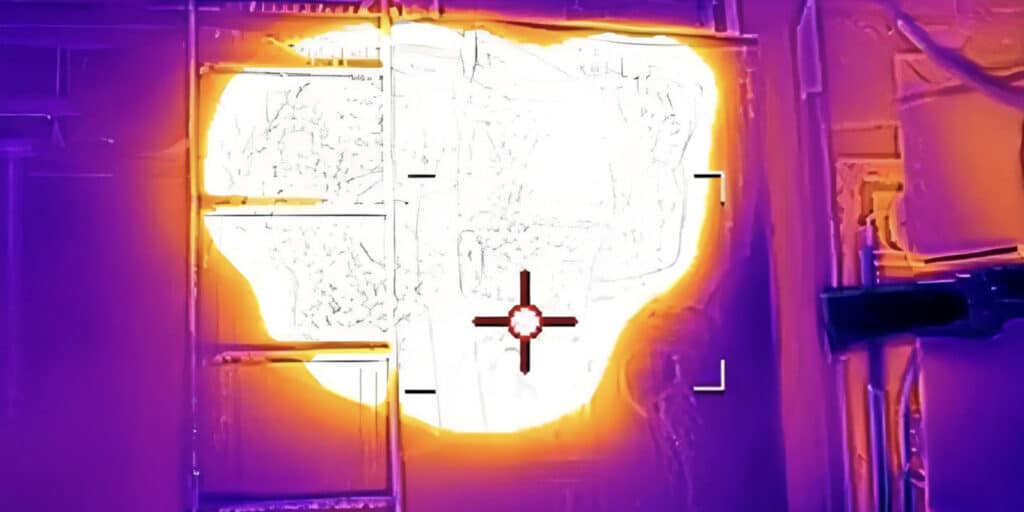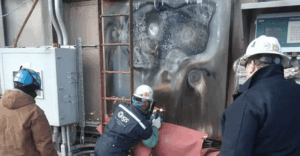Hot Spots on a Fired Heater Shell

If a hot spot appears on the steel shell of a fired heater, it means that the refractory lining has failed, allowing hot flue gases, or direct radiant heat from the burners to contact the shell.
Clearly, immediate action needs to be taken – precisely what action depends on several factors:
How large is the area?
In the extreme case of an entire wall failure, there is no choice; the unit must be shut down for an emergency repair. This may take a minimum of 1-2 weeks, if replacement refractory materials, etc. are immediately available.
If the area is very small, corresponding perhaps to the opening of a joint between bricks, or modules, there are two choices:
- Monitor and determine if the area is stable, or if there is any expansion of the problem. Steam may be directed to the area, to minimize damage to the shell, etc.
- Address immediately with IGS Hot-tek services. While the unit is still operating, a HIS will determine the scope of the problem and a HRR will stabilize and return the integrity of the refractory lining. This is a semi-permanent repair which may be replaced with a conventional repair during the next available planned shutdown.
If the area is somewhere in between, then:
- Address immediately with IGS Hot-tek services. While the unit is still operating, a HIS will determine the scope of the problem and a HRR will stabilize and return the integrity of the refractory lining. This is a semi-permanent repair which may be replaced with a conventional repair during the next available planned shutdown.
- Emergency shutdown, with loss of production for a minimum of 1-2 weeks, assuming that replacement refractory materials, etc. are immediately available.

What is the shell temperature in the affected area?
Any local increase in shell temperature needs to be investigated. It is a good idea to have regular, daily, IR thermography inspections of the outer shell to track the integrity of the lining.
Obviously, the higher the shell temperature, the more severe the problem is, with direct contact with flue gases.
Even slightly higher local temperatures may indicate a failure of a refractory anchor and worthy of an action plan.
In any case, it is recommended to take remedial action:
- Address immediately with IGS Hot-tek services. While the unit is still operating, a HIS will determine the scope of the problem and a HRR will stabilize and return the integrity of the refractory lining. This is a semi-permanent repair which may be replaced with a conventional repair during the next available planned shutdown.
How close is the next planned shutdown?
If the next planned shutdown is a few weeks, or days away, it may be possible to make some temporary external repairs, such as directing steam on the affected area to extend the life of the shell and any adjacent structural components. Adding extra refractory to the outside of the shell will contain the heat and protect personnel but will do nothing for extending the life of the failing lining.
This is a situation which will require continuous vigilance since the conditions could worsen dramatically.
If the next planned shutdown is months, or years away, then, depending on the previous factors:
- Address immediately with IGS Hot-tek services. While the unit is still operating, a HIS will determine the scope of the problem and a HRR will stabilize and return the integrity of the refractory lining. This is a semi-permanent repair which may be replaced with a conventional repair during the next available planned shutdown.
- Emergency shutdown, with loss of production for a minimum of 1-2 weeks, assuming that replacement refractory materials, etc. are immediately available.
Experiencing a hot spot?
Learn how to assess the risk and take action before it leads to costly shutdowns.
